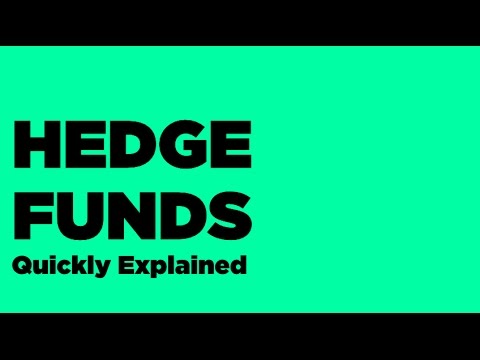
You’re less likely to run into liquidity issues and can generally buy and sell shares of these vehicles with ease. A serial bond falls under the type of bond that pays interest at regular intervals (usually every six months). This means that the holder of a serial bond will receive six payments over the life of the bond.
Convertible bonds offer a blend of equity and fixed-income features, and inflation-indexed bonds guard against rising prices. Fixed income bonds, also referred to as fixed-rate bonds or simply bonds, are financial instruments used by governments, corporations, and other entities to raise funds from investors. These fixed-income securities play a crucial role in investors’ portfolios, offering a stable source of income and capital preservation.
Five Types Of Bonds Gen-Z Investors Can Use For Allocation To Debt
Conversely, if the bond goes up in price to $1,200, the yield shrinks to 8.33% ($100/$1,200). Similarly, corporations will often borrow to grow their business, to buy property and equipment, to undertake profitable projects, for research and development, or to hire employees. The problem that large organizations run into is that they typically need far more money than the average bank can provide. Issuers of bonds, on the other hand, such as corporations, often receive favorable tax treatment on interest, which they can deduct from their taxes owed. The interest rate paid on a variable rate bond varies with a baseline indicator, which is usually a well-known interest rate.
After that, I got exposed to other verticals such as wealth management and personal finance, which further improved my understanding of the financial world. The bond market tends to move inversely with interest rates because bonds will trade at a discount when interest rates are rising and at a premium when interest rates are falling. This is why the famous statement that a bond’s price varies inversely with interest rates works. When interest rates go up, bond prices fall in order to have the effect of equalizing the interest rate on the bond with prevailing rates, and vice versa.
For example, if the price were to go down from $1,000 to $800, then the yield goes up to 12.5%. Bond holders are positioned after more senior debt holders to be paid back from issuer assets in the event of a default. https://1investing.in/ Bond holders have the option to convert their bonds into the stock of the issuer at a predetermined conversion ratio. The bond market is actually much larger than the stock market, in terms of aggregate market value.
Each serves a particular funding purpose and has a profile of risks, interest rates, times to maturity, and other characteristics. U.S. government bonds are virtually risk free but pay investors a relatively low interest rate. So-called junk bonds issued by corporations have a higher default risk than investment grade bonds but compensate by paying higher rates.
Are bonds a good investment?
Climate bonds are a type of debt security issued to finance climate change mitigation and adaptation projects. They’re issued by any government to raise funds linked to climate change solutions. Unlike other bond categories, climate bonds are considered to be green investments because they’re used to finance projects that have a positive impact on the environment. Companies can offer bonds that give investors the right to claim the issuer’s underlying assets if the company defaults, or does not make a payment on time. Companies can also issue bonds that are not backed by assets, known as unsecured debt. Convertible bonds let investors convert their holdings into stock.
Flatband λ-Ti3O5 towards extraordinary solar steam generation – Nature.com
Flatband λ-Ti3O5 towards extraordinary solar steam generation.
Posted: Wed, 13 Sep 2023 15:15:40 GMT [source]
A coupon bond contains attached coupons that investors send to the issuer; these coupons obligate the company to issue interest payments to the holders of the bonds. A coupon bond is easier to transfer between investors, but it is also more difficult to establish ownership of the bonds. Prepayment risk is the risk that a given bond issue will be paid off earlier than expected, normally through a call provision. This can be bad news for investors because the company only has an incentive to repay the obligation early when interest rates have declined substantially. Instead of continuing to hold a high-interest investment, investors are left to reinvest funds in a lower interest rate environment.
How Do Bond Ratings Work?
You don’t have to buy an actual bond to take advantage of its benefits. They include bondmutual funds, which are are collections of different types of bonds. There are three primary categories of bonds, though the specifics of these different types of bond can vary depending on their issuer, length until maturity, interest rate, and risk.

Instead, they offer a fixed return at maturity, i.e., the difference between the issue price and face value. They are ideal for investors who want to lock in a fixed return for a specific period. Short-term bonds can be relatively low-risk, predictable income.
Bonds have historically been more conservative and less volatile than stocks, but there are still risks. For instance, there is a credit risk that the bond issuer will default. There is also interest rate risk, where bond prices can fall if interest rates increase. One of the differences between bonds and bond funds is that individual bonds are less risky than bond mutual funds. Assuming that there are no defaults, the holder of an individual bond gets his principal sum intact upon the instrument’s maturity. With bond funds, the investor risks losing his principal should prices fall.
Investment losses are possible, including the potential loss of all amounts invested, including principal. Brokerage services are provided to Titan Clients by Titan Global Technologies LLC and Apex Clearing Corporation, both registered broker-dealers and members of FINRA/SIPC. You may check the background of these firms by visiting FINRA’s BrokerCheck. This content is provided for informational purposes only, and should not be relied upon as legal, business, investment, or tax advice. References to any securities or digital assets are for illustrative purposes only and do not constitute an investment recommendation or offer to provide investment advisory services. XYZ wishes to borrow $1 million to finance the construction of a new factory but is unable to obtain this financing from a bank.
Which bond means that the interest rate for the entire bond duration, until it matures, remains the same?
Investors can assess a bond’s risk through ratings from companies that analyze an issuer’s credit quality. What are the types of bonds that have a variable interest rate? A floating rate bond is a type of debt security that pays a variable interest rate, meaning the interest rate on the bond changes over time, depending on what’s happening in the market. In the US, floating-rate bonds are offered by companies rated below investment grade. Floating rate bonds are types of investment bonds ideal for more aggressive investors because they offer the potential for higher returns.
Treasury bonds and TIPS are typically sold directly via the federal government, and can be purchased via its TreasuryDirect website. You can also buy bonds indirectly via fixed-income ETFs or mutual funds that invest in a portfolio of bonds. Bonds are a type of security sold by governments and corporations, as a way of raising money from investors. From the seller’s perspective, selling bonds is therefore a way of borrowing money. From the buyer’s perspective, buying bonds is a form of investment because it entitles the purchaser to guaranteed repayment of principal as well as a stream of interest payments.
Corporate bonds
Also, since bonds vary in price opposite interest rates, if rates rise bond values fall. Sovereign bonds, or sovereign debt, are debt securities issued by national governments to defray their expenses. Because the issuing governments are very unlikely to default, these bonds typically have a very high credit rating and a relatively low yield.
They offer the investor the potential for capital appreciation and fixed income. A non-investment-grade bond is a bond that pays higher yields but also carries more risk and a lower credit rating than an investment-grade bond. Non-investment-grade bonds are also called high-yield bonds or junk bonds. The United States Department of the Treasury issues treasury bonds. These are widely considered to be the safest bonds to purchase.
- Green bonds, for instance, follow sustainability principles that include guidance on the use of proceeds, the process for project evaluation and selection, the management of proceeds and reporting.
- In other words, it is the internal rate of return of an investment in a bond if the investor holds the bond until maturity and if all payments are made as scheduled.
- The bond market tends to move inversely with interest rates because bonds will trade at a discount when interest rates are rising and at a premium when interest rates are falling.
- Then there are building-block funds, which focus on medium-size areas of the market, generally one degree removed from a major asset class.
These bonds are attractive to some investors as the interest payments to investors can be tax-free at the local, state, and/or federal level. If a bond has a call provision, it may be paid off at earlier dates, at the option guilt funds of the company, usually at a slight premium to par. A company may choose to call its bonds if interest rates allow them to borrow at a better rate. Callable bonds also appeal to investors as they offer better coupon rates.
As the name implies, investors can use these funds as components to put together diversified portfolios. We consider 15% to 40% to be an appropriate weighting range for a building-block fund. Zero coupon bonds, which come under the umbrella term Treasury Bills, can be purchased by retail investors using the RBI Retail Direct Platform. The risk and reward trade-off differs for each type of bond in finance.
We consider core funds suitable for an allocation as large as 40% to 80% of the total portfolio. Although, a good investment opportunity, but one should always remember that bond carries a default risk except sovereign bonds. So, deciding on a bond could be a tough job for new investors and should think thoroughly before deciding the type of bonds, one can go for. These are issued through notifications in the official Central Government Gazette. Mutual funds have specific schemes which target investments in these bonds.
